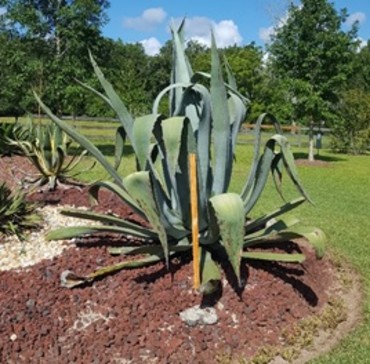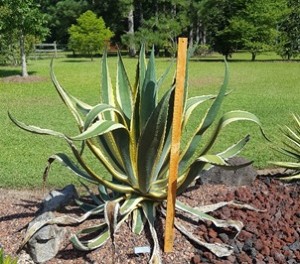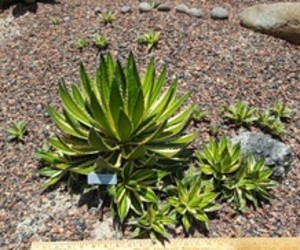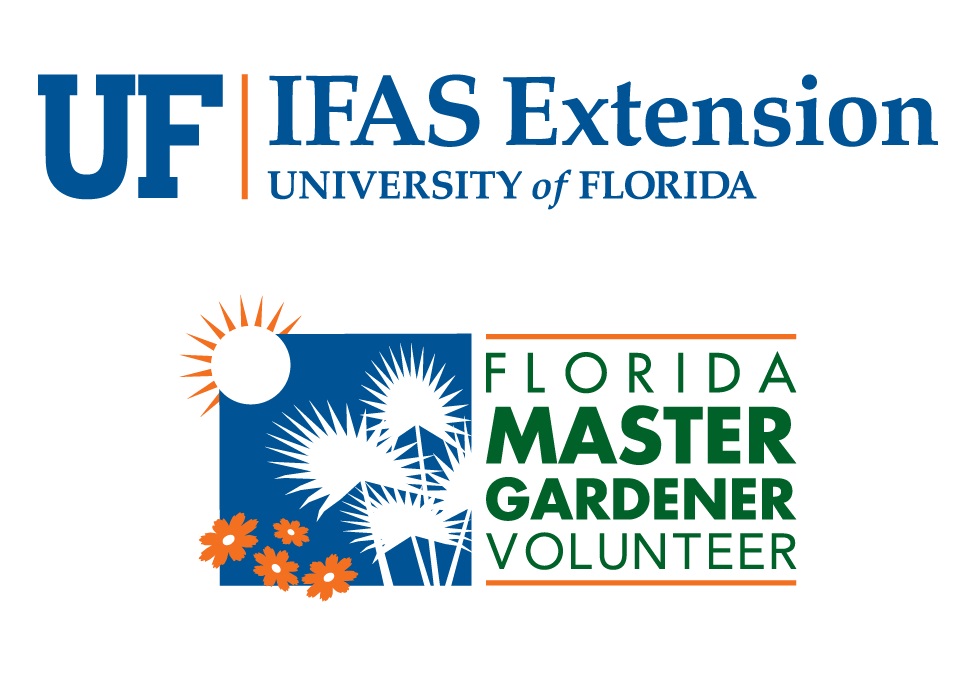Ask Master Gardener Volunteer
Michele Hackmeyer
Do you have a hot, dry, full sun area that you would like to make into some kind of interesting garden bed? First let me be clear when I say ‘full sun’, I mean all day sun. What I like to describe in my yard as ‘dawn to dusk, unrelenting sun’. If you have such a spot, you may want to consider creating a dry bed containing agaves, yuccas, and cacti. Once established, these beds do not need any watering and only what I consider a minimal amount of maintenance.
To see an example of this type of landscaping on a grand scale, visit the NFREC-Quincy (North Florida Research and Education Center), located on Highway 267, just north of I-10 at exit 181. https://nfrec.ifas.ufl.edu/quincy-map/
To plan the bed
To plan the bed consider what kind of plants you want to use and each one’s mature size. Agaves come in a wide range of sizes, the most common being the Century plant, Agave americana. This plant grows to at least 6 ft. tall and 8 ft. wide. The thick massive grey-green leaves have sharp spines along the edges and tips. This is a plant that you DO NOT want to have to work around, so it needs lots of room. In Mexico and Central America, it is used for fencing and forms an impenetrable barrier to keep cattle and people out. It is extremely drought tolerant. It might show a slight bit of damage if we have a hard freeze, but is typically hardy throughout Zone 8 (Wakulla County).


Another popular cultivar
Another popular cultivar is Agave marginata with creamy yellow leaf margins. This plant will also grow to 6 ft. tall and 8 ft. wide. There are several other agaves that grow big, but I have also found some that a quite small with interesting colors. (Some of these will be available at our next UF/IFAS Extension Master Gardener Volunteer plant sale).
The Agave lophantha ‘Quadricolor’ grows to only 12 inches tall and 18 inches wide and has greens, yellow, and cream striped leaves. It produces an abundance of ‘pups’ or offspring.


Several varieties of yucca
There are several varieties of yucca that do well in a dry bed. Yucca filamentosa, Adam’s Needle, is a native to this area and grows 2-3 ft. tall and wide. The leaves are strap-like and soft so they are not as dangerous as the aptly named Spanish Bayonet variety. The leaves do not grow from a stem, but are basal and grow from one point. The edges produce curly threads or ‘filaments that add interest to the plant. It does produce a tall bloom spike that is similar to other yuccas and is cold hardy in this area.
You may also want to try some of the native cacti such as Opuntia humifusa, Pricklypear. It grows 1.5 feet tall and spreads. The mature plant will produce yellow flowers. http://www.sfrc.ufl.edu/extension/4h/plants/Pricklypear/index.html
Spines or Thorns
As you can see from the descriptions, most of these plants have some sort of spines or thorns, so they need to be given plenty of room. I started with a 12-foot circle and put three Americana’s in it along one side. Way too many plants and way too close together! When I expanded my bed to 25 feet, I removed two of those and added other varieties with lots of room in between. My current bed has eight different agaves and two varieties of yucca with a little room for maybe one or two more plants.
In my next blog, I will describe how we built the bed.
If you have any questions or suggestions for future articles please email to wakullamg@ifas.ufl.edu
| The Institute of Food and Agricultural Sciences (IFAS) is an Equal Opportunity Institution authorized to provide research, educational information, and other services only to individuals and institutions that function with non-discrimination with respect to race, creed, color, religion, age, disability, sex, sexual orientation, marital status, national origin, political opinions, or affiliations. U.S. Department of Agriculture, Cooperative Extension Service, University of Florida, IFAS, Florida A&M University Cooperative Extension Program, and Boards of County Commissioners Cooperating |
 0
0



